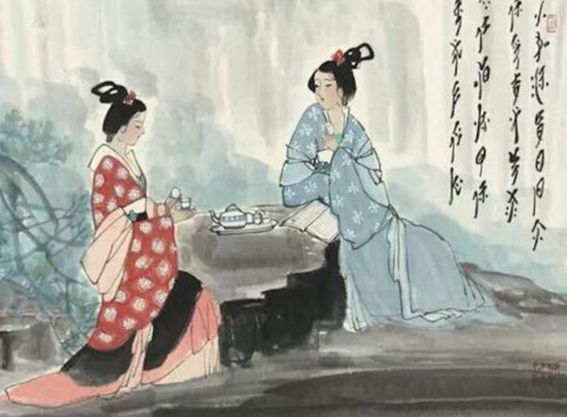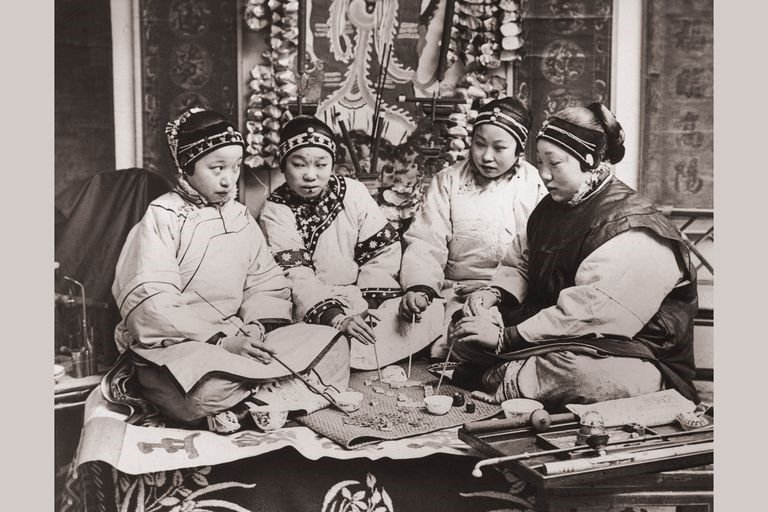Did you know there is a script created exclusively for women?

In the 1980s, in the province of Hunan, in China, a writing system was discovered that was used exclusively among women. Today, investigators are trying to discover the history of this alphabet: Was it as secret language? A way to defy men? An obligation or a door to freedom?
Índice de contenidos
Index of contents
Index du contenu
Inhaltsverzeichnis
Indice dei contenuti
1. What do we know about Nüshu today?
Discovered by linguists in the 1980s, Nüshu is a writing system that was created and used exclusively among women. It was created at the beginning of the 19th Century, when education was a privilege reserved for men and women had to comply with the three obediences: obeying their father, husband and son.
Thanks to recent investigations, we know that Nüshu is the phonetic transcription of a dialect from the region of Hunan, specifically from Jiangyong County. It is a syllabic system that contains over one thousand symbols, each one representing a sound of the dialect. Although it may seem like a huge figure, it is much more accessible than standard Mandarin, which contains over 56,000 characters. The fine, elegant and elongated script is accompanied by very precise dots and it is written from top to bottom. The majority of inscriptions that still exist today are painted on fans or embroidered onto fabric. As stated by the researcher Cathy Silber, women were usually buried with their writings, which were the link to the most intimate part of their lives.

2. What was written in Nüshu?
To date, around 500 texts have been found in Nüshu. This literature is formed mainly by poems and autobiographies. The poems include advice given between the women, whether for the education of their children or the well-being of their home, and the biographies recount the daily life of the women at the time. There are also several traces of “third day missives” or “sanzhaoshu”, which were given as gifts from women to newly-wed females and contained prayers, congratulations, words of mourning and advice.
The majority of such writings are steeped in sadness and resignation. They also reveal the prevailing sense of solidarity within the female community, who drew up agreements, connecting them eternally through their writings. That is why some of them took their manuscripts to the grave, to recreate this connection after death. There is no doubt that in the patriarchal society of 19th Century China, the Nüshu script represented a privileged form of expression and a form of empowerment.

3. Origin and disappearance of Nüshu
The origin of this writing system is still unknown, although researchers have put forth many theories by way of explanation. One legend has it that this writing system was invented in the eleventh Century by the concubine of an emperor, in order to share her misfortunes with her family, who were still in the countryside. Others mix esoteric explanations and misconceived tales.
The most widespread and popular explanation is that the women of the region invented an alphabet, because access to writing was prohibited to them. This alphabet was then passed down from mother to daughter, but it gradually disappeared. The final blow was the Chinese revolution in 1949. Women were granted increasing rights thanks to new marriage laws and social reforms. Later on, during the communist cultural revolution, book burnings multiplied and many manuscripts in Nüshu were destroyed or burned.
The last woman to learn Nüshu in the traditional way died in 2004, taking with her many secrets about an alphabet that has still not been deciphered in its entirety. However Nüshu, as peculiar and unique as it is, is not the only endangered linguistic system. Since the 2003 UNESCO convention to protect cultural diversity, languages belong to the intangible cultural heritage of humanity. Of the 7,000 languages that exist today in the world, over half are endangered and a language disappears every two weeks. In fact, if no protective measures are put into place, 90% of languages will disappear over the course of this century.
Other articles you may be interested in:

Graduate in Hispanic Philology from the University of Toulouse (France) and Master in Translation and Cultural Intermediation (EN-ES>FR) from the University of Salamanca.



Add new comment